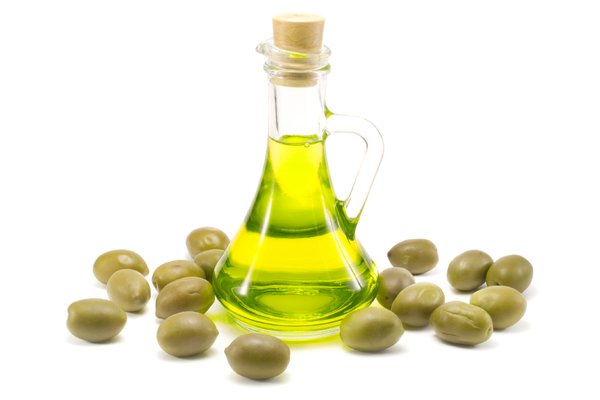Olive oil
Buying olive oil can be overwhelming to a new cook, there are seemingly endless choices and widely disparate prices. We'll let you know what the different grades, prices, regions and extraction methods are all about. As a bonus we'll give you the inside track on the best way to store and purchase this essential kitchen staple.

Olive oil health benefits
Olive oil is widely known as a "healthy" fat, but most people don't know why. Olive oil is mostly a monounsaturated fat which help lower LDL cholesterol and are considered heart healthy. Extra virgin olive oil also has high amounts of antioxidants which also help out your heart.
Olive oil regions
Olives are primarily grown in the Mediterranean region, which boasts over 90% of the world's crop. Spain and Italy are the best known producers, but Greece is the world's third largest olive grower (their oil is rarely seen in whole form in the US but is often blended into better known Spanish and Italian brands). Flavor varies tremendously between oils, even within the same country. To get a consistent product most large brands blend oils from different regions, so your Italian olive oil may actually contain olives from several countries. Most brands available in mega marts are blends, so make sure to check the label. In recent years California has begun making a name for itself in olive oil production.
Olive oil extraction methods
While olive oil used to be extracted with a simple screw or hydraulic press, today most producers use a centrifuge. The centrifugal process makes "first press" an antiquated marketing term because it's a continuous process. Temperature affects the flavor and in the EU "cold pressed" oils must be extracted at under 80ºF.
Here's a video of the process at a California olive orchard, from harvest to oil production:
Olive oil grades
You've heard of extra virgin, but do you know what it means? Olive oil is graded based on quantity of free fatty acids and in terms of olive oil less fatty acids are better. Extra virgin olive oil is the highest grade and in the EU must have less than 0.8% acidity. Virgin olive oil needs to have less than 2%. Acidity should be marked on the bottle and certainly varies from brand to brand (and within each brand from year to year). That the restriction is set by the EU is important, US companies can use terms like "extra virgin" without legal restriction. As a general rule, remember to check the label and find the acid content.
Some phrases to watch for:
- "100% Pure Olive Oil" - It sounds great, but this usually signifies a cheap refined oil that has been mixed with a virgin oil to give flavor.
- "Light olive oil" - No this does not mean it contains less fat, light just means it contains less flavor
- "Refined olive oil" - Oil that was previously unpalatable that has gone through mechanical and chemical processes to reduce acidity
Because of its expense and rather assertive flavor, we often reserve extra virgin olive oil for raw preparations (dressing greens and pasta, on bread, etc). Furthermore heating extra virgin olive oil reduces its flavor so you're better off just using virgin in the first place. Most of the health benefits of olive oil aren't limited to extra virgin, so using just virgin or even regular olive oil is perfectly fine.
Where to buy olive oil
While local mega marts tend to stock many kinds of olive oil, they aren't often of high-quality (even the more expensive brands). Going to upscale stores like Whole Foods or Williams-Sonoma can get you quality but will also leave your wallet quite a bit lighter. If you're looking for a regional oil try finding a specialty store for that region (Italian, Greek and Spanish speciality grocery stores are fairly common). Or if you don't mind buying in a bit more quantity, try looking online. Online shops like iGourmet have more varieties than even the largest specialty stores and often much better prices. You need to watch out for shipping prices, but shopping at Amazon with their free super saver shipping can really help out. Even if you're shopping locally, reading the reviews online can help give you an edge.
Olive oil storage
Olive oil is unrefined so it needs to be stored with more consideration than some other cooking oils. Light is olive oil's biggest enemy, it starts to break down the chlorophyll which gives the oil its lovely color. Look for brands that are sold in dark bottles or even better opaque cans. We like to store our oil in a bottle with a pour spout for ease of use, just make sure that the oil isn't exposed to the air and keep it in a dark cool place. You can buy a bottle with the sealable pour spout but we prefer to just buy the pour spout.
